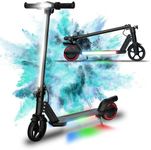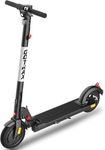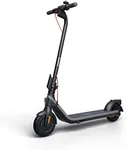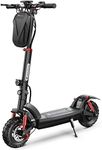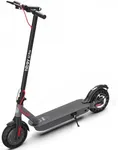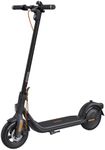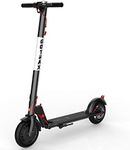Buying Guide for the Best Electric Scooters
Choosing the right electric scooter can make your daily commute or leisure rides much more enjoyable and convenient. The best scooter for you depends on how and where you plan to use it—whether it’s for short city trips, longer commutes, or just fun rides around the neighborhood. Understanding the main features and how they relate to your needs will help you make a smart choice.RangeRange refers to how far the scooter can travel on a single charge. This is important because it determines how much you can use the scooter before needing to recharge. Scooters with a short range (up to 15 km) are suitable for quick errands or short commutes, while medium-range models (15-30 km) are good for daily city travel. Long-range scooters (over 30 km) are best for longer commutes or if you don’t want to charge often. Think about your typical travel distance and pick a range that covers your needs with a little extra for unexpected trips.
Top SpeedTop speed is the maximum speed the scooter can reach. This matters for both safety and convenience. Lower speeds (up to 20 km/h) are safer and often allowed on sidewalks or bike paths, making them good for beginners or younger riders. Medium speeds (20-30 km/h) are common for city commuting, balancing speed and safety. Higher speeds (over 30 km/h) are for experienced riders and may be restricted in some areas. Consider your comfort level and local regulations when choosing the right top speed.
Weight and PortabilityThe weight of the scooter affects how easy it is to carry, especially if you need to take it on public transport or up stairs. Lightweight scooters (under 12 kg) are easy to carry but may have fewer features. Medium-weight models (12-18 kg) offer a balance between portability and performance. Heavier scooters (over 18 kg) are usually more powerful but harder to move around. Think about how often you’ll need to carry your scooter and choose a weight that fits your lifestyle.
Motor PowerMotor power, measured in watts, affects how well the scooter handles hills and how quickly it accelerates. Lower power (up to 250W) is fine for flat surfaces and lighter riders. Medium power (250-500W) is suitable for moderate hills and average-sized adults. High power (over 500W) is best for steep hills, heavier riders, or those who want faster acceleration. Match the motor power to your local terrain and your own weight for the best experience.
Tires and SuspensionTires and suspension impact ride comfort and safety. Solid tires are puncture-proof but can feel bumpier, while air-filled tires offer a smoother ride but may need more maintenance. Suspension systems help absorb shocks from rough roads. If you’ll ride mostly on smooth pavement, basic tires and no suspension may be fine. For rougher roads or longer rides, look for air-filled tires and some suspension for added comfort.
Braking SystemThe braking system is crucial for safety. Electric scooters may have electronic, disc, drum, or foot brakes. Electronic brakes are low-maintenance but less powerful, while disc and drum brakes offer stronger stopping power, especially at higher speeds. Foot brakes are simple but less effective. If you plan to ride fast or in busy areas, prioritize scooters with strong, reliable brakes.
Build Quality and Water ResistanceBuild quality affects how long your scooter will last and how well it handles daily use. Look for sturdy materials and good construction. Water resistance is important if you might ride in the rain or through puddles. Scooters with higher water resistance ratings can handle wet conditions better. Think about your local weather and how much you’ll use the scooter outdoors when considering these features.
